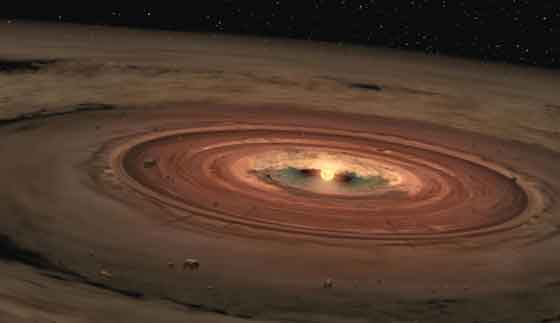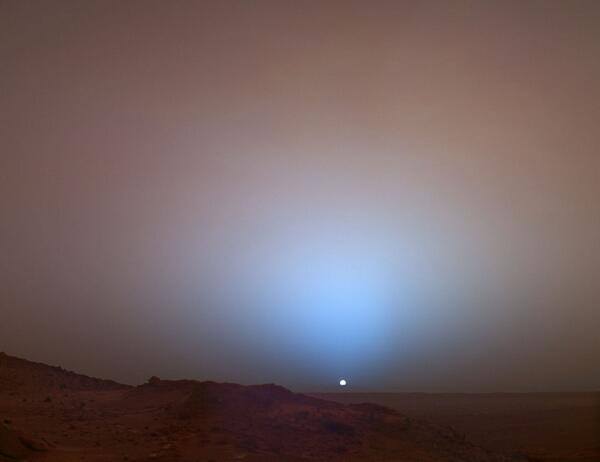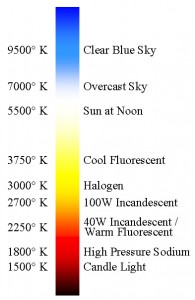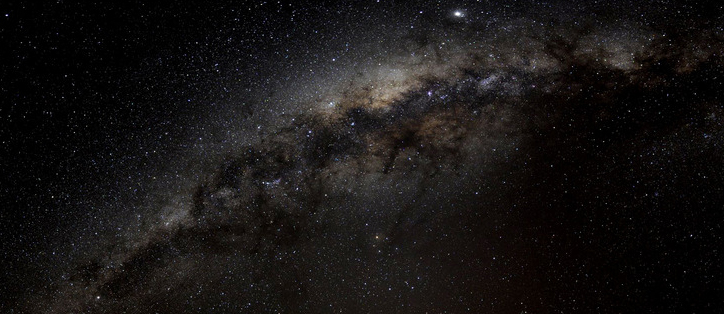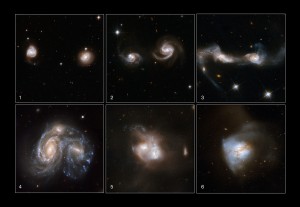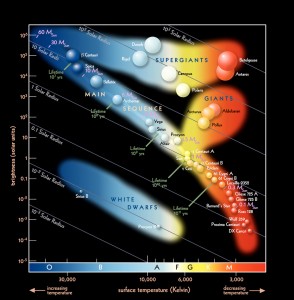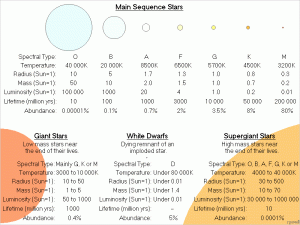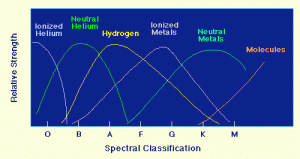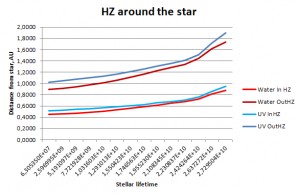Moving along on our world building quest, I’ll start talking about planets and gradually moving towards terrestrial planets and their properties.
Planet habitability depends on several factors: galactic environment of the planetary system (which includes the abundance of metals), stability of the planetary system, evolution, age and activity of the star (or stars), atmosphere, magnetosphere, and distance of a planet from its star. All this can make habitable worlds extremely rare. But we don’t take “no” for an answer, right?
Planetary system formation
A good (if not the best) example of planetary system formation and evolution is our own Solar System.
Stars form from clouds of gas, dust and ices. When a cloud of interstellar matter crosses the spiral arm of a galaxy, it begins to form clumps. The gravitational forces within the clumps cause them to contract, forming protostars. The center of a protostar may reach a temperature of several millions of degrees Celsius. At this high temperature, a fusion reaction begins. The energy released by this reaction prevents the protostar from contraction. According to the most conservative estimates it could take a hundred million years for a new sun to form (Montmerle et al. 2006).
Planetary system formation coincides with the process of star formation, when a protoplanetary disc is formed around a young stellar object. Mass and metallicity of the star and protoplanetary disc impacts the type and size of planetary systems they might possess.
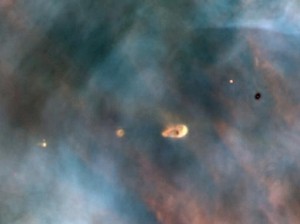
For a start to possess terrestrial planes it would have to have formed from a nebula containing sufficient heavy elements. The star would have to be Population I and younger than the age of formation of the galactic disc (~10 Gyr). Over this period, the metallicity of the interstellar medium has risen due to the products of nucleosynthesis from successive generations of stars.
Naturally, one might expect maximum mass condensation within the pre-planetary nebula to vary with stellar luminosity. The central density of nebular dust, the parameter from which the mass of the nebula is scaled, varies in direct proportion to the mass and metallicity of the central star (Fogg, 1992). Formulas for the radius and density of nebular dust (the size of the protoplanetary disc and possible planetary system scale) can be taken from the same paper. The ACCRETE algorithm, mentioned in it, can be taken here. The best option from that list is the Starform program (written in C) by Matt Burdick, 1988, which is an enhancement of the basic accretion code with more output options.
Planet formation incorporates four distinct stages (Lissauer, 1993).
At the initial stage grains condense and grow in the hot nebular disk, gradually settling to the mid-plane. The composition of the grains is determined by the local temperature of the nebula.
Then, during the early stage growth of grains to km-sized planetesimals occurs. Planetesimals initially have low eccentricities (e) and inclinations (i) due to gas drag.
At the middle stage (oligarchic growth) “focused merging” leads to agglomeration of planetesimals into Moon-to Mars-sized “planetary embryos.” Possible runaway accretion and subsequent dynamical friction (loss of momentum and kinetic energy of moving bodies through a gravitational interaction with surrounding matter in space) may lead to polarization of the mass distribution: a few large bodies with low e and i in a swarm of much smaller planetesimals with high e and i. The timescale for this process correlates inversely with heliocentric distance. Kokubo and Ida (2000) suggest that planetary embryos form in <1 Myr at 1 AU, in ∼ 40 Myr at 5 AU, and in > 300 Myr past 10 AU. The formation timescale and masses of planetary embryos are sensitive to the surface density of the disc.
During the late stage, once runaway accretion has terminated due to lack of slow moving material, planetary embryos and planetesimals gradually evolve into crossing orbits as a result of cumulative gravitational perturbations. This leads to radial mixing and giant impacts until only a few survivors remain, which are the nuclei of the system’s planets. The timescale for this process is approximately 10^8 yrs.
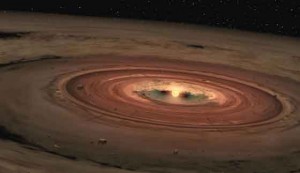
Because of the higher temperatures in the inner stellar system, accretion of ice and gas is inhibited so the planetesimals grow into what is known as the rocky terrestrial planets. Planetary growth is slowed down significantly once a gap is cleared within its orbit.
But during their lifetimes planets continue to grow by small amounts as they sweep up micrometeor dust particles or are impacted every few million years by larger asteroids or comets.
Planetesimals that are modest in size but did not merge to form larger objects, become asteroids and comets. The close proximity of Jovian gravitational pull might result in prevention of planetesimals growing larger, as it happened in the Solar System, leading to formation of the asteroid belt.
The the formation of giant planets can also occur via the disk instability (also see the papers here, here, here and here). However, if a disc mass is too small, the ability of disk instability to produce viable, self-gravitating clumps is signficantly compromised. Thus, core accretion remains as the favored formation mechanism for giant planets in such lower mass disks.
March 9th 2012 Update – A new accretion model has been offered by Anne Hofmeister, PhD, research professor of earth and planetary sciences and Robert Criss, PhD, professor in earth and planetary sciences at Washington University in St.Louis.
Water content
The water content of planetesimals in a given planetary system depends in a complex way upon a range of factors including the mass and evolutionary characteristics of the protoplanetary disk, overall metallicity of the molecular cloud clump from which the star is forming, and the positions, masses and timings of formation of the system’s giant planets.
Chambers (2003) found that the water content of terrestrial planets depends strongly on the eccentricity, mass and formation time of the giant planets, with larger values of e and M leading to drier planets, while larger values of giants time formation time led to more volatile-rich planets. He also found that systems with lower mass giant planets form the most life-sustaining planets.
Another study shows as well that a Jovian planet of larger mass forms a smaller number of terrestrial planets than a lower-mass body, but the water content of the terrestrial planets does not vary significantly with “Jupiter” mass.
August 27th 2013 Update — New study sheds light on planets in the habitable zone of red dwarfs. More recent work refreshes the possibility of water on these distant worlds, previously expected to be dry.
A job for a Jupiter
The biggest giant of the planetary system is usually referred to as Jupiter (or a Jovian planet), giving credit the Jupiter of the Solar System.
It has been shown that an eccentric Jupiter preferentially ejects much of the water-rich material beyond 2.5 AU, which causes the terrestrial planets to be dry (Chambers and Cassen 2002, Raymond et al., 2004). It has also been shown that, for water-rich terrestrial planets to form in the habitable zone, a Jupiter-mass giant planet must be at least 3.5 AU from the star and much farther if its eccentricity is nonzero (Raymond 2006). A Jupiter-mass giant planet at 5 AU, even on a circular orbit, plays a negative role in the water delivery process, ejecting more water-rich material than it scatters inward (Raymond et al., 2005a).
Systems with eJ > 0 tend to form terrestrial planets with slightly higher eccentricities than those with eJ = 0, and the total mass in terrestrial planets is less for systems with eccentric Jupiters. During planetary formation an eccentric Jupiter clears out the asteroid region much more quickly than a low eccentricity Jupiter (eJ < 0.1), both by increased ejection efficiency and, more significantly, a large increase in the number of objects which collide with the Sun, as expected from the results of Chambers and Wetherill (2001). The result of this is that eccentric giant planets tend to form volatile-poor terrestrial planets (Raymond et al., 2004).
In our Solar system Jupiter also played a key role in the formation of other giants and is believed to be important to life on Earth. It helps to stabilize the orbits of the inner planets, which in turn helps to stabilize Earth’s climate. And it keeps the inner solar system relatively free of comets and asteroids that could cause devastating impacts.
However, if Jupiter was not in orbit around the Sun and Earth were the only planet orbiting our star, the eccentricity of its orbit would not vary over time. The Earth’s eccentricity varies primarily due to interactions with the gravitational fields of Jupiter and Saturn.
More recent simulations show that the frequent formation of planetary-mass objects in the disk suggests the possibility of constructing a hybrid planet formation scenario, where the rocky planets form later under the influence of the giant planets in the protoplanetary disk (Shu-ichiro Inutsuka et al. 2010).
The snow line
In astrophysics the term refers to a particular distance in the solar nebula from the central protosun where it is cool enough for hydrogen compounds such as water, ammonia, and methane to condense into solid ice grains. Depending on density, that temperature is estimated to be about 150K – 170K. A density increase immediately past the snow line is expected due to the “cold trap” effect (Stevenson and Lunine, 1988). Thus, the lower temperature in the nebula beyond the frost line makes many more solid grains available for accretion into planetesimals and eventually planets. The frost line therefore separates terrestrial planets from Jovian planets.
There is a large uncertainty in the position of the snow line in the solar nebula. The standard notion of a snow line around 4–5 AU can explain the rapid formation of Jupiter in a high density environment immediately past the snow line. However, volatile-rich classes of asteroids are found as close as 2–2.5 AU, and are presumably a fossil record of ice-bearing material. Models of protoplanetary disks around T Tauri stars by Sasselov and Lecar (2000) result in snow lines as close as 1 AU to the central stars, depending primarily on the stellar luminosity and the rate of accretional heating within the disk. As these quantities evolve with time, so might the position of the snow line migrate with time.
Currently, the snow line of our solar system is around 2.7 AU, near the middle of the asteroid belt.
Snow line calc formula: SL =2.7*(Mstar/Msun)^2
It is possible to have gas giants (or mini gas giants) inside the frost line. Close-in giant planets (e.g. “hot Jupiters”, “hot Saturns”, “hot Neptunes” and Wet Giants) are thought to form far from their host stars and migrate inward, through the terrestrial planet zone, via torques with a massive gaseous disk. Several-Earth-mass planets also form interior to the migrating Jovian planet, analogous to recently discovered “hot Earths”. Very-water-rich, Earth-mass planets form from surviving material outside the giant planet’s orbit, often in the habitable zone and with low orbital eccentricities (Raymond et al, 2006).
Metallicity
Higher metallicity means that (for a fixed total protoplanetary disc mass) the amount of solid material will be higher. The abundance of raw materials in a metal-rich protoplanetary disc increases the surface density and so accelerates the build-up of gas giant cores in the inner 10 AU. Pollack et al. (1996) found that increasing the surface density of solids by 50 per cent (equivalent to just +0.18 in [M/H]) reduced the time to form Jupiter from 8 to 2 Myr.
When substantial cores can form while the disc is still in its early gas-rich phase (~10 Myr), they can accumulate thick gaseous envelopes and also migrate inwards due to the viscous drag of the gas. This can produce inner gas giants as observed. The general effect of higher solid abundance is to speed up core growth, and so there is much more time for giant planets to form and migrate before the disc disappears.
While the occurrence of gas giant planets is a sensitive function of stellar metallicity, the occurrence of debris discs does not have this same dependence. This suggests that construction of smaller planetesimal bodies, such as those found in the Kuiper Belt, does not require enhanced metallicity. However, core growth times are much longer in the outer disc, at several tens of AU. If it can take 3 Gyr for a Pluto-sized core to form out at 100 AU (Kenyon & Bromley 2004), the gas would have disappeared much earlier and so the planet could not have added an atmosphere (Greaves 2005).
Planetary system death and (possible) “life after death”
It is generally believed that our Sun was created within a nebular cloud produced by a supernova nearly five billion years ago. However, planets, including Earth, may have been remnants ejected from the dying solar system by a supernova.
Using our own solar system as an example (Schroder & Smith 2008) when the parent star became a red giant, the accelerating power of its solar winds would have blown away the life-sustaining atmospheres of its planets which included airborne microbes, creating a nebular cloud at the far edges of the dying solar system.
The parent star may have lost between 40% to 80% of its mass before exploding (Kalirai, et al. 2007; Liebert et al. 2005; Wachter et al. 2008) and its planets would have significantly increased their orbital distances and may have been ejected from its solar system even prior to supernova. Thus the supernova may have shattered but probably did not atomize all its planets.
A supernova creates tremendous shock waves, shattering planets, and expelling most of the star and remaining planetary debris into the surrounding interstellar medium. This debris eventually becomes part of the surrounding nebular ring created by the solar winds, planetary atmospheres, and expelled mass of the dead star (Greaves 2005, van Dishoeck 2006).
There is also a possibility that when a star goes supernova, it ejects molten iron into these nebular clouds. Therefore, planets begin to form when debris comes into contact with and then sticks to the hot iron which becomes a planetary core (Joseph and Schild 2010a). Planetary cores therefore, may be comprised of the remains of the shattered planets which had been expelled from the dead system. Therefore, some solar systems may acquire fully formed or broken and shattered planets which grow by accretion after they are captured by the new protostar.
Given the paucity of evidence for nearby stars the same age as the sun, it could be assumed only a few protostars may have been produced by the supernova of the parent star. Thus, the parent star may have been only a few solar masses larger than the sun. This assumption is supported by isotopic analysis of the Murchison meteorite. Measurments of silicon carbide (Werner et al. 1994; Nittler & Hoppe 2005) and presolar SiC grains (Savina et al. 2003) from the Murchison indicates that the grains and silicon are most likely the residue of or were produced secondary to a supernova of a carbon rich intermediate mass star that was between 1.5 to 3 solar masses (Savina et al. 2003). Thus, the Murchison may be a remnant of the parent star’s solar system, though this can’t be determined at this time.
As only the estimated mass of that star is available and there is no information on nearby stars at the time of supernova, a Hertzsprung-Russell diagram cannot be applied to determine the age of the parent star at the time of supernova. However, based on the estimated ages and lifetimes of other intermediate mass stars (Pillitteri and Favata 2008) it can be estimated that a parent star of between 1.5 and 3 solar masses was at least 1 billion to 3 billion years in age before it entered the red giant phase.
